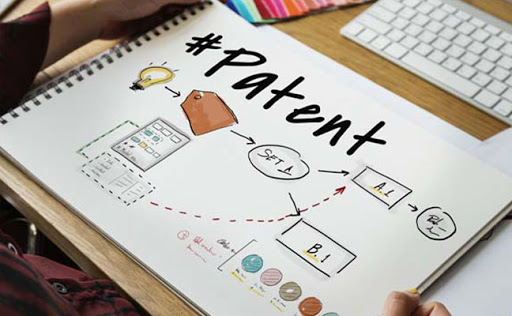Patent filing plays a vital role in our country. patent is a protection granted by the national government for an invention. This protection excludes others from inventing, using or selling inventions for a period of up to 20 years. Many pharmaceutical companies and university researchers seek patent protection to recover the research and development costs of specific genes and proteins, laboratory techniques and patents related to drugs. For a patent to be issued by a granting agency such as a patent office fee, they must be new, useful, and not obvious to others working in the same field.

Utility – The claimed search must be useful / functional. A machine must function according to its intended purpose and show chemical activity or use little of it.
Innovation – this discovery should be different than anything known before; It should not have been described in a previous publication and should not have been used or sold in public.
Opacity / Ingenuity – This discovery must be a development or improvement that would not have been previously apparent to the average skilled worker in the technology involved.
Patent filing
Patent filing in Chennai T. Nagar or patent registration is the first step an inventor takes to protect his or her invention from abuse. Patent filing in India is a fairly complex ordeal, however, with proper legal guidance, it can be done easily. Any professional organization or anyone who believes in protecting their patent, which is one of the intellectual properties, should seek legal advice from expert patent practitioners.

Filing process
Examination of details
We will examine all possible details, including the potential uses of inventions in industries and the advantages over existing products for Patent filing in Chennai T. Nagar.
Draft application
We will recommend a certified attorney who will make your request and draft the application based on the details you provide.
File an application
Patent filing in Chennai T. Nagar the draft document will be submitted to the Registrar and upon acceptance; you may use ‘patent pending’ on your product at any time during the coming year. You can also periodically check the status of your patent application on our user friendly portal saline portal.
Differences between provisional and complete specification
Temporary and absolute specificity: their purpose
Basically, the patent specification serves the purpose of describing your invention. The main difference between the temporary and full specification comes with the type of application you file for Patent filing in Chennai T. Nagar. You can file either a temporary application or a full application. However, the difference comes in Form 2 where you need to fill out a temporary and full specification section. Of course, it depends on the application you are planning to file.

Provisional specification
If your search is still in development, you should file a temporary application. Temporary application allows you to save the priority date for your application in Patent filing in Chennai T. Nagar. As a result, you get 12 months from the date of filing the provisional application to file the full application.
You don’t have to describe everything about the search. Basically, just a simple description is enough. The provisional specification does not need to include drawings or claims. However, it is highly advisable to describe the search as much as possible. But, this will remove any doubts and you will have a strong foothold in terms of defense. In conclusion, the provisional specification does not need to be elaborated too much. The main idea of a temporary application is to secure a priority date.
Full specification
You should file a complete application when your search is complete in a holistic sense. The full app will register every detail about your search. From its ingredients to its usefulness, everything needs a precise description. Basically, the more you expand your description, the better your chances of registering a patent. Therefore, the inclusion of drawings is absolutely necessary and the claims should be very specific. Also, you must make sure that you clearly state the components of your search, its usefulness, and its future scope. As a result, this will ensure that your IP rights are protected and secure. If your specification is broad, it will discourage other companies from violating / opposing your application at the time of publication.
Also, check the Patent Office Fees manual for more details on the process of writing specifications.

Temporary and absolute specificity: structural differences
Chapter III, Section 10 of the Indian Patent Act, explains how to formulate the contents of a patent specification. As a result, you must prepare a full specification in the format below.
Search title,
Introduction,
Search area
Background search
Budget search
A brief description of the figures,
Statement of discovery,
Detailed description of the search,
Claims,
Abstract
Even in the provisional specification it is necessary to follow a very similar constitution. However, it does not need to include a statement of discovery and claims. Moreover, the preamble also varies for a temporary and full specification.
Recent news
According to the DIPP proposal, the patent application filed in Patent filing in Chennai T. Nagar by a woman innovator will be scrutinized expeditiously with the aim of promoting women entrepreneurship in the country. The Department of Industrial Policy and Promotion (DIPP) under the Ministry of Commerce and Industry has prepared draft rules to amend the Patent Rules, 2003.
According to the draft rules, if there is an applicant or at least one female applicant in the patent seeking group, the application will be examined expeditiously by the Indian Patent Office fee. The department is taking a number of steps to reduce the time it takes to award patents and trademarks, including additional use of technology.

The target is to bring down the time for patent examination and give a grant of about 18 months to 18 months by March 2020. The patent approval process includes filing an application, publication in the patent journal, examination and then a grant. Each step takes time if objections are raised or documented. According to experts, domestic players receive only 17-18 per cent of the annual patent registration, with the remaining players taking part. TC James, president of the National Intellectual Property Organization (NIPO), said the speedy approval of applications for women was a welcome step as it would promote innovation. According to the World Intellectual Property Organization (WIPO), India has the seventh largest patent filing office fee in the world.

